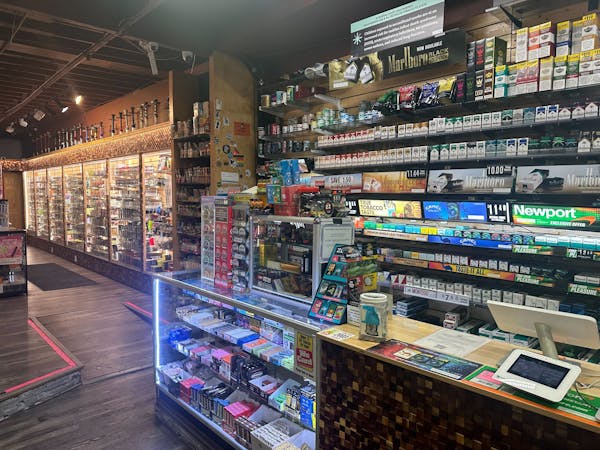A west-suburban law enforcement agency is permanently outfitting its officers with lightweight cameras mounted on their handguns, marking them among the first in the state to adopt the homegrown technology amid calls for transparency in police shootings.
Gary Kroells, the police chief for the West Hennepin County Safety Department, which serves Independence and Maple Plain, said that each of his 10 officers will carry the weapon-mounted cameras at a cost of $7,200 — significantly less expensive than body cameras. The department tried out the cameras for the past year as part of a pilot project. A few months ago, the Farmington Police Department began carrying the devices.
The 3.2-ounce, 3-inch long camera sits in front of the trigger and activates video and audio as soon as an officer pulls the gun from the holster. The gun camera comes with a flashlight to illuminate targets in the dark.
"There's very few incidents that happen at the end of a weapon," Kroells said, adding that the cameras won't just capture deadly force encounters, but also provide information as to how and why officers are using their guns. "We wanted to provide our officers the opportunity to have the video value of what happens at the end of that weapon, along with transparency for citizens."
The cameras are sold by Viridian Weapon Technologies of Maple Plain. It is one of several companies in the United States now marketing gun-mounted cameras to law enforcement agencies. President and CEO Brian Hedeen said 250 departments across the country are testing or working on implementing the cameras, while 10 agencies, including in Arizona and South Carolina, have fully implemented them.
Hedeen said the company began researching the technology soon after the 2014 fatal police shooting of Michael Brown in Ferguson, Mo., which caused widespread unrest. Such cameras may have cleared up the controversies surrounding the highly publicized shootings of individuals by police in recent years, including in Minnesota. Last month, Minneapolis city officials released body camera footage in the fatal police shooting of Thurman Blevins the day before the officers were cleared of wrongdoing. St. Paul officials have also pledged to release body camera footage in the shooting of William "Billy" Hughes. Last year, there were no body cameras or dash cameras activated in the fatal shooting of Justine Damond by Minneapolis police officer Mohamed Noor, who was later charged with third-degree murder and manslaughter.
"It's not going to capture traffic stops and things like that, but if officer-involved shootings are something that a department wants to capture, this is the best tool," Hedeen said.
Kroells said body cameras were "not cost effective," estimating that buying and operating them for his department would run about $40,000, most of it for collecting and storing the vast amounts of video on a cloud service. He said the department already has audio devices on officers' uniforms and cameras on the department's squad cars. The department has never had an officer-involved shooting, he said.
Hedeen said that's the allure of his company's technology. Once purchased, there's no incremental cost.
"They're very inexpensive to own," he said. "It doesn't change how a department has to operate; you don't have to hire extra staff."
Ben Feist, legislative director of the American Civil Liberties Union of Minnesota, said that in critical incidents it's important to have as many video records as possible, but that gun cameras should complement body cameras rather than replacing them.
"We'd miss a lot of the context that a body camera could provide; the gun camera won't show what led up to the gun unholstering," he said. "Lots of types of police conduct or misconduct won't be captured if you don't have the body camera."
Chuck Wexler, executive director of the Washington, D.C.-based Police Executive Research Forum, a national law enforcement think tank, also said context is important in what footage is gathered.
"To me its important to know what choices the officer had before he drew the gun," he said.
Matthew Plowman, Viridian's general counsel, said while it's not a scientific study, he had reviewed 100 to 150 cases of officer-involved shootings in 2016 and 2017. In more than half the cases, there was no incident to review before the gun being drawn. He said some of the communities that bought the company's cameras also had body cameras for their officers. Hedeen said the devices have not yet captured an officer-involved shooting.
Herman Nixon, chief of the 14-member police department in Williams, Ariz., said last year that he got interested in the cameras after one of his lieutenants saw them at a firearms expo in Las Vegas.
Nixon said at the time that his department has not had an officer-involved shooting since 2003, but his officers usually have to draw their guns two or three times a month.
Randy Furst • 612-673-4224
Twitter: @randyfurst

Cigarettes at $15 per pack? Minneapolis might do it.
![St. Louis County Board approved a plan to distribute $24 million in CARES funding, including $6 million to be distributed to small businesses. ] ALEX](https://arc.stimg.co/startribunemedia/ED62G7Y2RWISNRUZQRT3ZTJVHU.jpg?h=91&w=145&fit=crop&bg=999&crop=faces)
Duluth man sentenced to 40 years for role in drive-by shooting that killed 19-year-old

